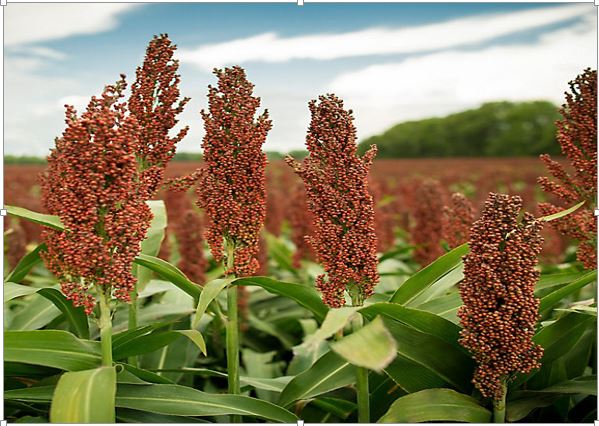
Prof. Muyideen Oyekunle
INTRODUCTION
The Programme is one of the largest research Programmes in the Institute that is responsible for development and release of cereal crop varieties of high grain yielding abilities and nutritional qualities, resistance to diseases and pests, tolerance to drought and responsiveness to good agronomic management and post-harvest technological practices. In the past the Programmes worked on crops including Sorghum, Maize, Millet, Wheat and Barley which are among the most popular and important cereals crops grown in Nigeria. The National Agricultural policy has streamlined Research focus of Agricultural Institutes. The Institutes now has only the National mandate for research in Sorghum (Sorghum bicalar (L) and Maize zea major.
The Programme research thought is in line with the National policy on food security Research Projects are design based on the major current production challenges of Sorghum and millet. The major aim of the programme is no enhance Maize and Sorghum productivity per unit area and crops utilization for food and feed.
(B)The specific objectives of the programme based on the Institutes short and medium farm plan (2020-2025) and:
ACHIEVEMENTS OF THE PROGRAMME
The Programme has achieved a lot in the areas of crop variety improvement, cultural practices and management of crop against pests and diseases for better output.
i. Crop Variety Improvement: The Programme has developed and released 49 improved Sorghum varieties designated as SAMSORG 1-49 and 57 improved Maize varieties released as SAMMAZ 1-57. Some of the good qualities of these varieties include the following:
a. High yields
b. Drought tolerance and Striga resistance for both Sorghum and Maize.
c. Excellent grain quality e.g. quality protein Maize (QPM).
c. Good Sorghum malting quality for industrial beer brewing.
c. Sorghum flour for composite bread, biscuits, cakes, etc.
c. Different maturity classes of varieties of the two crops suit to the different ecological areas of the Savanna.
ii. Cultural Practices and Management: Developed appropriate Planting dates, plant spacing (75cm x 25cm), plant population (53,000 plants/ha), fertilizer types, rates and time of application for early medium and late maturity varieties as well as herbicides and pesticides have been developed and packaged accordingly for the different types of varieties.
CHALLENGES OF THE PROGRAMME
i. Irregular sufficient funding to research
ii. Lack of modern research equipment.
ON-GOING RESEARCH PROJECTS
Sorghum | ||
S/N | Research title | Research Scientists |
1 | Sorghum Germplasm in Nigeria | Yeye and Aba |
2 | Screening for Striga Resistance in Sorghum | Yeye, Aba, Abdulmalik and Shebayan |
3 | Variety Evaluation | Yeye, Aba and Abdulmalik |
4 | Hybrid Development | Yeye Aba and Abdulmaliki |
5 | Population Improvement Hybridization and Selection of Sorghum lines | Aba, Yeye Shebayan and Halilu |
6 | Variety Testing | Aba Yeye, Shebayan and Halilu |
7 | Sorghum Seed Production | Aba, Yeye and Halilu |
8 | Productivity of Sorghum (Sorghum bicolor (L) Moench) as influenced by Types and Rates of Biochar | Ishaya, Amapu, Shebayan and Tunku |
9 | Effects of cow dung and inorganic nitrogen on growth, grain yield and grain malting qualities of two Sorghum varieties | Goma, Labe, Mani and Tunku |
10 | Effects of stand configuration and nitrogen rate on short Kaura sorghum productivity | Labe, Goma, Adamu and O.O Ugbabe |
Stem borer resistance to sorghum as influenced by sowing date and nitrogen rate | Labe, Yeye, Aba and Adamu | |
Maize | ||
12 | Maintenance of maize germplasm | Oyekunle, Ado, Usman, Abdullahi and Hussaini |
13 | Introgression of quality protein (QPM) gene into normal maize germplasm | Oyekunle, Ado, Usman, Abdullahi and Hussaini |
14 | Development of Drought and Flood Tolerant Maize Germplasm | Oyekunle, Ado, Mani, Abdullahi, Usman, and Hussaini |
15 | Evaluation of improved Maize germplasm in multi-locations | Oyekunle, Ado, Mani, Abdullahi, Usman, and Hussaini |
16 | Development of Striga resistant maize germplasm | Oyekunle, Usman, Ado, Abdullahi, and Hussaini |
17 | Evaluation improved Maize germplasm in multi-locations | Oyekunle, Usman, Ado, Halilu Abdullahi, Mani, Hussaini and Abdulsalam |
18 | Evaluation of orange Maize varieties and hybrids | Oyekunle, Ado, Mani, Usman and Abdullahi |
19 | Evaluation of improved Maize germplasm of private seed companies in multi-locations | Oyekunle, Ado, Mani, Usman and Abdullahi, |
20 | Breeder Seed Production of Released IAR Maize Germplasm | Oyekunle, Ado, Usman, Abdullahi and Huassaini |
21 | Development of drought and Striga resistance Maize inbred lines using pedigree breeding method | Oyekunle, Ado and Hassan |
22 | Inheritance of resistance to Exerrohilum turcicum leaf blight in maize | Oyekunle, Abdulkarim (M.Sc. Student), M. Yusuf, and M.D. and Katung |
23 | Effects of organic manures and inorganic phosphorus fertilizer on the productivity of maize in northern Guinea savanna |
Do you want to get quality seeds for your farming or business? |